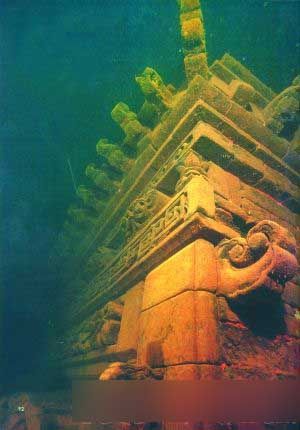 |
|
Lion Town [Photo/baike.com]
|
Many antique examples of architecture in China were destroyed or damaged during the "cultural revolution" (1966-76), but Lion Town was completely protected. The reason was quite unusual: It was submerged in 1959 when the Xin'an River Reservoir was established, forming Qiandao Lake.
The town, known as the "underwater palace," remains intact under about 39 meters of water but diving is banned to protect it. But people can visit the Lion Town Museum, which built a scale model of the ancient town using historical documents, photographs and sonar, along with interviews of former residents.
Construction of Lion Town started in the Han Dynasty (206 BC-AD 220) although most of the buildings were built in the Ming (1368-1644) and Qing (1644-1911) dynasties.
When the reservoir was built, 28 towns, including Lion Town, disappeared beneath the surface of the water along with 1,377 villages and almost 50,000 acres of farmland. About 290,000 people were relocated for the project in Chun'an County, Hangzhou.
Lion Town Museum features traditional black-and-white southern China architecture. The museum also displays an ancient map of the town and more than 800 old photographs of its buildings and people. A video explains the town's history.
A scenic site is next to the museum. Jiangjia Romance Town is a quaint place known for the Longchuan Bay Scenic Area. The area includes a couple of hotels that are a throwback to the Mao Zedong era. Guests at these two hotels do not need to pay the 200 yuan entry fee for Longchuan Bay Scenic Area.
Longchuan Bay Scenic Area is a wetland that includes a crystal clear lake, forests, gently sloped hills and abundant couch grass.
The best season to visit the scenic area is autumn, when the leaves on maple trees turn a rusty orange and the couch grass glitters like tinsel. Manghuayang is a popular scenic spot. At sunset, the couch grass looks red because of the orange sunlight and the unique red clay in the southeast Qiandao Lake area.
We Recommend:
